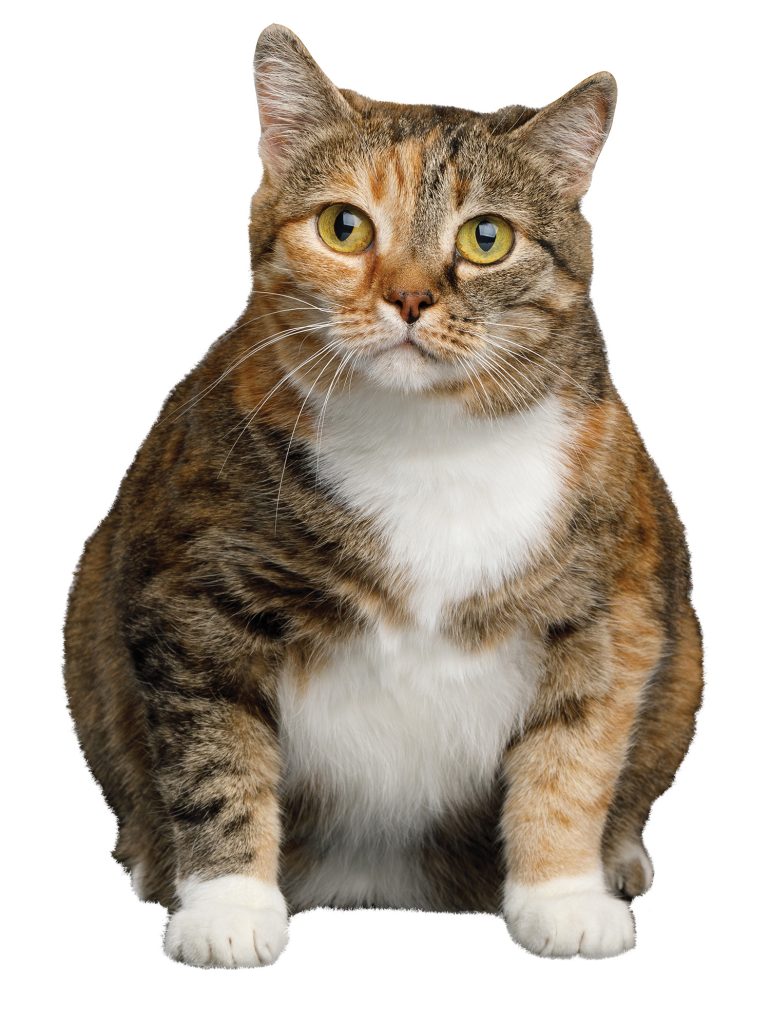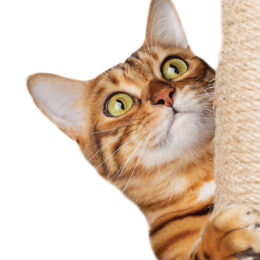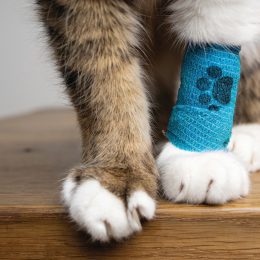
By most estimates, well over half of all cats in the United States are overweight. A 2019 survey of pet owners and veterinarians suggests about 60 percent of cats are overweight or obese, a statistic that hasn’t budged
in recent years.
To determine your cat’s body fat, during its annual physical exam the veterinarian will feel the ribs for how much fat is covering them. At an ideal weight, the ribs should be easily felt without pressing too firmly. The vet will also check the cat from the side, looking for an abdominal fat pad.
Cat owners who see their pet every day may not notice kitty has gained weight says Dr. Gene Pavlovsky, a small animal veterinarian at the University of Illinois College of Veterinary Medicine. But owners will often notice the cat is slowing down as it ages or that it is limping. Both of these signs can be exacerbated by weight gain, he says.
“Increased weight gain often doesn’t allow them to groom themselves properly or use their litter box,” Pavlovsky adds. As a result, fat cats may have an unkempt coat and the owners may notice inappropriate urination and defecation just outside the litter box.
Weight/health connection
Pavlovsky explains that there are several proven connections between weight gain in pets and their health. Overweight pets are more likely to develop diabetes and orthopedic diseases. Mobility issues can also lead to reductions in both quality of life and life expectancy. The cat could struggle going up and down steps to reach its food or litter box or to get outside. It may also struggle jumping into bed.
If a pet owner notices any of these signs, it is important to seek the advice of a veterinarian on how to safely put the cat on a weight-loss program. The veterinarian will make sure that there aren’t any other health issues with the pet and make recommendations.
“It is vital to not just reduce the amount of food that a pet is fed,” Pavlovsky says. Simply reducing the food may create problems for its internal organs.
“There are so many different diets available to pet owners that it can be overwhelming,” Pavlovsky notes. His broad advice is to choose a reputable brand that has veterinary nutritionists on staff. He also says the life stage of the food should be right for the age of the animal; for example, a kitten should be eating a specifically labeled “kitten food,” and an adult cat should eat a diet designed for adults.
Check the bag
Owners should also look for an Association of American Feed Control Officials (AAFCO) statement on the bag. This ensures that the food follows the rules and is complete and balanced.
The amount to feed listed on the pet food bag gives a good starting point, but is based on the pet’s ideal weight, not the weight it currently is.
“Owners need to remember that any other food — human table scraps or treats — that their pet gets adds calories to the diet,” Pavlovsky says. It is important to use consistent treat brands vs. switching between brands to avoid stomach upset, and calories from treats should make up less than 10% of the diet.
Though overweight pets are a very common problem, it’s one that can be resolved. Love and affection can be given in other ways than food, such as through interaction and training.
As always, if you have any questions about your pet’s health, contact your veterinarian.



